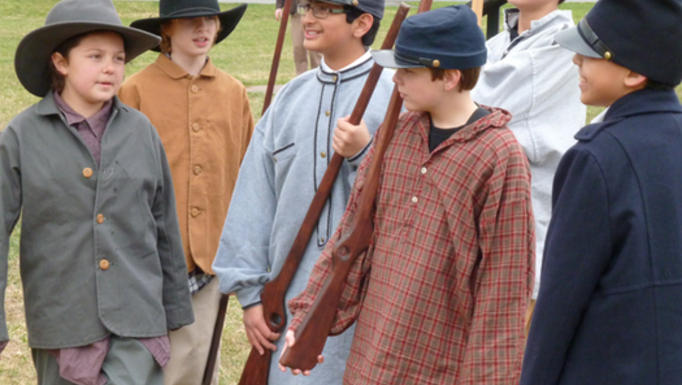To provide observations and information on the emerging fields of landscape scale conservation, heritage preservation, and sustainable community development.
Newsletter
Stay up-to-date with the latest nature, culture and community news.
We won’t spam you or share your information. Newsletters are sent approximately 10 times a year. Unsubscribe at any time.

San Antonio Missions: Learning from the World Heritage Experience
On October 17, 2015 dignitaries from around the country gathered to celebrate the inscription of the San Antonio Missions as the 23rd World Heritage Site in the Untied States (US) and the first in Texas. The San Antonio Missions are a group of five frontier mission complexes situated along an over seven mile stretch of the San Antonio RiverBehind the well-deserved World Heritage hoopla and the carefully crafted statement of the property’s Outstanding Universal Value, there is more than a decade of hard work. As interested in World Heritage recognition grows in the country and around the globe, what can we learn from the hard won experience of the San Antonio Missions?

The 2016 Federal Budget: How did Large Landscapes Fare?
After months of uncertainty, weeks of negotiations and two short-term extensions to keep the government open, Congress passed and the President signed the 2009 page omnibus spending Bill, titled the Consolidated Appropriations Act of 2016. How did federal initiatives that support landscape scale work and fund our natural and cultural conservation program fare?

National Heritage Areas Deliver Place-Based Education
The thirtieth anniversary of the first National Heritage Area (NHA) and the upcoming centennial of the National Park Service (NPS), inspired research into the relatively untapped topic of the mutual benefits to both NHAs and the NPS. Recent research has explored how NHAs deliver place-based educational programming in partnership with nearby national park units.

The National Park Service Brand: Do I have a Franchising Opportunity for You!
Over the last year the George Wright Journal has been running a series of Centennial Essays reflecting varying perspectives on the future of the National Park Service. The most recent piece by Holly Fretwell, a research fellow at the Property and Environment Research Center (PERC) in Bozeman, Montana, offers some new ideas.

Can Parks Organizations Continue to Ignore Social Values in Landscape Stewardship?
“Social value” is not a term that national park organizations in the United States, Canada and New Zealand have tended to use with much frequency, reserving it almost exclusively for discussions of the distant past, rather than for more recent and contemporary place attachments and community networks. How can social values or the “values of people” be better incorporated into national park management policies, such that agencies move beyond lip service and actually include various publics in meaninful decision-making processes.

San Antonio Missions: Learning from the World Heritage Experience
On October 17, 2015 dignitaries from around the country gathered to celebrate the inscription of the San Antonio Missions as the 23rd World Heritage Site in the Untied States (US) and the first in Texas. The San Antonio Missions are a group of five frontier mission complexes situated along an over seven mile stretch of the San Antonio RiverBehind the well-deserved World Heritage hoopla and the carefully crafted statement of the property’s Outstanding Universal Value, there is more than a decade of hard work. As interested in World Heritage recognition grows in the country and around the globe, what can we learn from the hard won experience of the San Antonio Missions?

The 2016 Federal Budget: How did Large Landscapes Fare?
After months of uncertainty, weeks of negotiations and two short-term extensions to keep the government open, Congress passed and the President signed the 2009 page omnibus spending Bill, titled the Consolidated Appropriations Act of 2016. How did federal initiatives that support landscape scale work and fund our natural and cultural conservation program fare?

National Heritage Areas Deliver Place-Based Education
The thirtieth anniversary of the first National Heritage Area (NHA) and the upcoming centennial of the National Park Service (NPS), inspired research into the relatively untapped topic of the mutual benefits to both NHAs and the NPS. Recent research has explored how NHAs deliver place-based educational programming in partnership with nearby national park units.

The National Park Service Brand: Do I have a Franchising Opportunity for You!
Over the last year the George Wright Journal has been running a series of Centennial Essays reflecting varying perspectives on the future of the National Park Service. The most recent piece by Holly Fretwell, a research fellow at the Property and Environment Research Center (PERC) in Bozeman, Montana, offers some new ideas.

Can Parks Organizations Continue to Ignore Social Values in Landscape Stewardship?
“Social value” is not a term that national park organizations in the United States, Canada and New Zealand have tended to use with much frequency, reserving it almost exclusively for discussions of the distant past, rather than for more recent and contemporary place attachments and community networks. How can social values or the “values of people” be better incorporated into national park management policies, such that agencies move beyond lip service and actually include various publics in meaninful decision-making processes.


